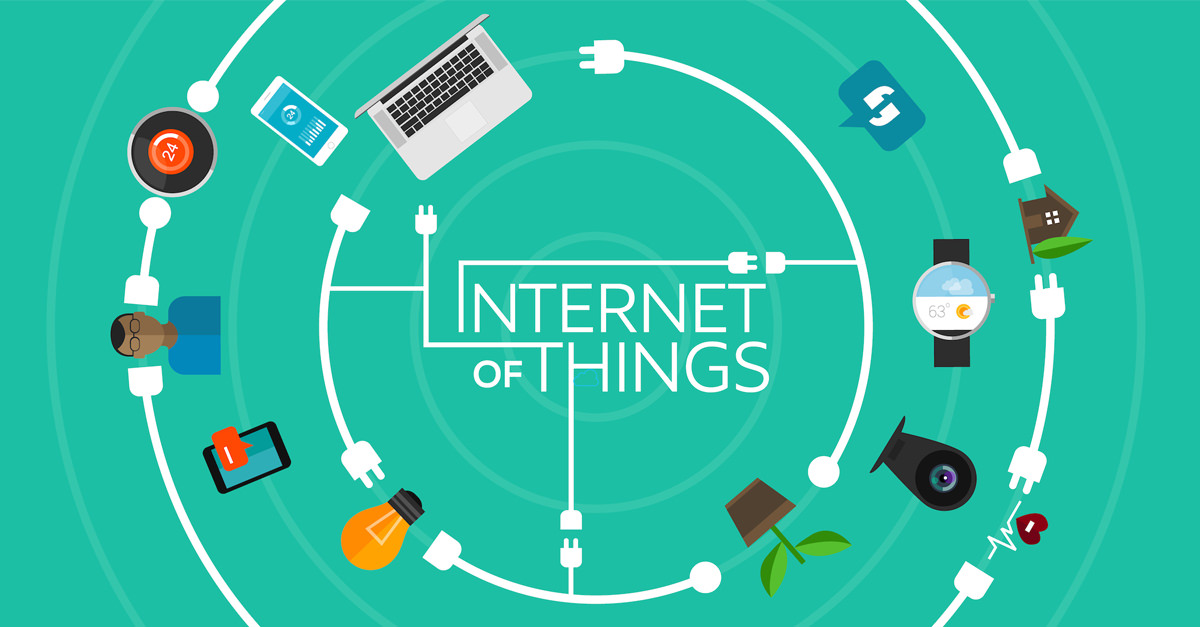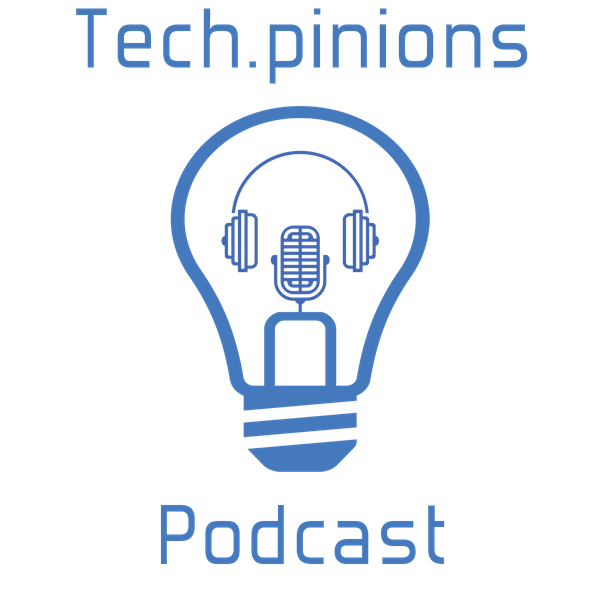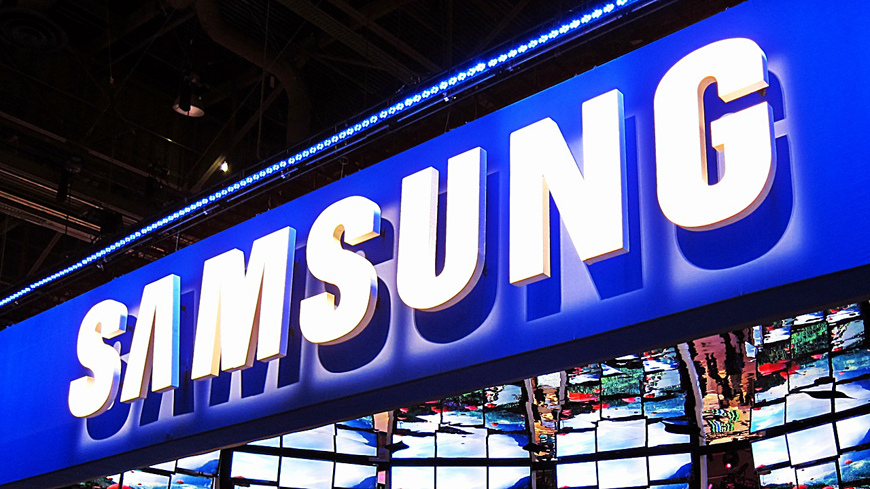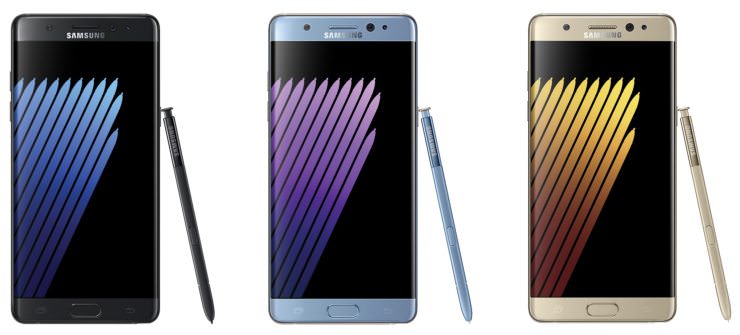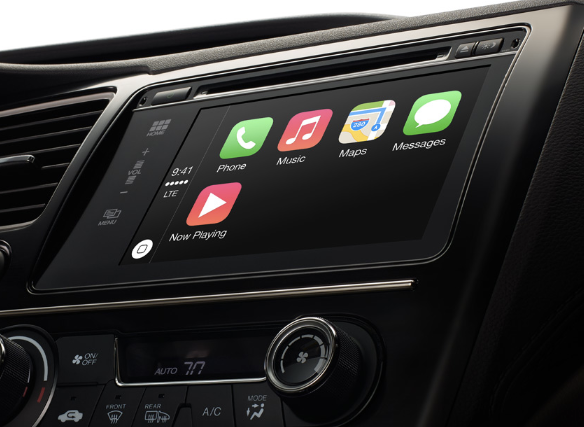Apple’s Transition From Looking and Touching to Listening and Talking
Part 1: Looking Back
Angst
As you may well know, there’s an awful lot of angst concerning Apple’s removal of the headphone jack from their latest model iPhones.
Every new idea has something of the pain and peril of childbirth about it. ~ Samuel Butler
I won’t rehash it all other than to say that a lot of people — and I mean a LOT of people — disagree with Apple’s decision to remove the headphone jack from the recently released iPhone 7. And when I say a lot of people disagree with the removal of the headphone jack, I mean they VEHEMENTLY disagree.
[pullquote]Taking the headphone jack off the phones is user-hostile and stupid[/pullquote]
Taking the headphone jack off phones is user-hostile and stupid. ~ Nilay Patel
Wow. Strong words.
Don’t worry about people stealing an IDEA. If it’s original, you will have to ram it down their throats. ~ Howard Aiken
If you’re going to sin, sin against God, not the critics. God will forgive you, but the critics won’t. paraphrasing Hyman Rickover
So, are the critics right? Is Apple doing their customers a disservice?
New ideas come into this world somewhat like falling meteors, with a flash and an explosion, and perhaps somebody’s castle-roof perforated. ~ Henry David Thoreau
Or is it we who are doing Apple a disservice?
Our dilemma is that we hate change and love it at the same time; what we really want is for things to remain the same but get better. ~ Sydney J. Harris
Looking Back
Before we try to answer the questions posed above, let’s first take a step back in order to gain a broader perspective.
Acquire new knowledge whilst thinking over the old, and you may become a teacher of others. ~ (probably not) Confucius
I believe that the past can teach us a lot about the future.
The further back you look, the further forward you can see. ~ Winston Churchill
So before we discuss the removal of the headphone jack and the viability of Apple’s new Bluetooth AirPods, let’s first take a look back on some computing history.
Smaller, Ever Smaller
Since the advent of the Apple II and the rise of the mass-market consumer PC, you hear “computer” and you think “monitor, mouse, keyboard,” in some variation. ~ Matt Weinberger, Business Insider

But that’s not the way it’s always been.
Computers have gone from Mainframes that took up an entire floor, to Minis that filled an entire office, to PCs that sat on desktops, to Notebooks that laid on our laps, to Smartphones that rested in pockets, to watches that wrapped around our wrists. I can’t be the only one who sees the pattern here. Every generation of computer has gotten smaller and smaller. And that trend is not going to stop. It’s not a question of “if” computers are is going to get smaller, it’s only a question of and “when.”
Well, let me correct myself. It’s not only a question of “when” computers will get smaller, it’s also a question of “how.” Making computers smaller is relatively easy. Making them smaller while maintaining their usefulness is not so easy and does, in fact, pose a significant challenge.
The Windows Mobile Mistake
We may not know what the next User Interface should be, but we know what it shouldn’t be. It shouldn’t be a smaller version of the current User Interface.
Remember how Microsoft tried – for years and years and years – to squeeze its desktop User Interface into tablets and phones? Nowadays, we look back and mock Microsoft for those early, lame attempts to create a modern phone interface. But that smug point of view is simply retroactive arrogance. We now know what Microsoft should have done, so we’re astonished that they too didn’t employ the same 20/20 hindsight that we now do. But at that time — although almost none of us liked the tiny menus or the easy to lose styluses — no one had a better idea.
Not only that, most of us didn’t even know that a better idea was needed.
Unique User Interface
So a smaller version of the current User Interface provides a bad experience for the User. What then is the solution?
The solution, of course, is a brand new User Interface. It turns out that each successive generation of computer requires its very own unique User Interface — a User Interface specifically tailored to work with the new, smaller form factor.
Unfortunately, creating a brand new User Interface is easier said than done, in part because it’s extremely counterintuitive. In hindsight, all the best user interfaces look obvious. In foresight, those self-same user interfaces look like obvious failures.
Macintosh
Take, for example, the User Interface employed by the Macintosh.

The User Interface of the Macintosh was soon to become the standard for desktop PCs, with many of its features still in use today. But at the time, Xerox — which created several of the building blocks for the soon-to-be Macintosh User Interface — didn’t know what they had.
When I went to Xerox PARC in 1979, I saw a very rudimentary graphical user interface. It wasn’t complete. It wasn’t quite right. But within 10 minutes, it was obvious that every computer in the world would work this way someday. ~ Steve Jobs
Yeah, Steve Jobs instantly saw the promise of what was to become the Macintosh User Interface…
…but most of us aren’t Steve Jobs. Like the engineers at Xerox, we don’t recognize the value of a new User Interface even when we’re looking right at it.
By the way, anyone who thinks that Steve Jobs and Apple “stole” the UI form Xerox, needs to read this article and see this video.
iPhone
Another example of not knowing what we had was the iPhone. I think most everyone would now agree that, with the introduction of the iPhone, Steve Jobs and Apple knocked the Smartphone User Interface out of the park. But that’s not how people saw it at the time.
Some thought the iPhone was an embarrassment to Apple:
Apple should pull the plug on the iPhone… What Apple risks here is its reputation as a hot company that can do no wrong. If it’s smart it will call the iPhone a ‘reference design’ and pass it to some suckers to build with someone else’s marketing budget. Then it can wash its hands of any marketplace failures… Otherwise I’d advise people to cover their eyes. You are not going to like what you’ll see. ~ John C. Dvorak, 28 March 2007
Internet commentators were no more impressed with the newly announced iPhone than were the press:
Im not impressed with the iPhone. As a PDA user and a Windows Mobile user, this thing has nothing on my phone..i dont see much potential. How the hell am I suppose to put appointments on the phone with no stylus or keyboard?!…No thanks Apple. Make a real PDA please….
lol last i checked many companies tried the tap to type and tap to dial … IT DOESNT WORK STEVIE, people dont like non-tactile typing, its a simple fact, this isnt a phone its a mac pda wow yippie….I mean it looks pretty but its not something i forsee being the next ipod for the phone industry…
im sorry but if im sending text messages i’d rather have my thumb keyboard than some weird finger tapping on a screen crap.
Touch screen buttons? BAD idea. This thing will never work.
Apparently none of you guys realize how bad of an idea a touch-screen is on a phone. I foresee some pretty obvious and pretty major problems here. I’ll be keeping my Samsung A707, thanks. It’s smaller, it’s got a protected screen, and it’s got proper buttons. And it’s got all the same features otherwise. (Oh, but it doesn’t run a bloatware OS that was never designed for a phone.) Color me massively disappointed.”
And, of course, even years after the iPhone appeared on the scene, competitors continued to overlook its significance:
Not everyone can type on a piece of glass. Every laptop and virtually every other phone has a tactile keyboard. I think our design gives us an advantage. ~ Mike Lazaridis, Co-CEO, Research In Motion, 4 June 2008
So globally we still have the world running on 2G internet. Blackberry is perfectly optimized to thrive in that environment. That’s why the BlackBerry is becoming the number one smartphone in those markets. ~ Mike Lazaridis, Co-CEO, Research In Motion, 7 December 2010
Lessons
The lesson here is fourfold:
First, new user interfaces are hard. Really, really hard.
Second, we often don’t realize a new user interface is even needed.
Third, each user interface is unique — radically different from the User Interface that preceded it.
People should think things out fresh and not just accept conventional terms and the conventional way of doing things. — Buckminster Fuller
Fourth, even when a new user interface is introduced, and even if it ends up being the perfect solution in the long run, in the short run it’s not met with cries of “Thank goodness you’ve arrived!” No, it’s met with scorn, derision and dogged resistance.
Why Bother?
Before we go any further, I guess we should ask ourselves: “Why do we even need smaller computers that require a new User Interface anyway? Smartphones are great, right?”
Well, yes and no.
Smartphones are wondrous supercomputers that we carry in our pockets and which can solve a multitude of problems. But for some tasks, Smartphones are far from ideal.
One problem with Smartphones is that they are demanding. They cry out for our attention. They buzz, they beep, they ring, they flash, they vibrate. They call to us, “now, Now, NOW! Pay attention to me now, damn it!”
“The word ‘now’ is like a bomb through the window, and it ticks. ~ Arthur Miller
Another problem with Smartphones is that they are intrusive. To interact with a Smartphone, we must look at it. When our focus is on the Smartphone, our focus is off everything else.
This can be socially awkward when we hunch over our Smartphones and ignore those around us. It can be amusing as we watch those using Smartphones bump into walls or walk into water fountains. It can be deadly as we walk into traffic while staring at our Smartphones or foolishly attempt to text while driving.
Part 2: The Next User Interface
Just as we needed a brand new “touch” user interface in order to turn smaller Smartphone form factors into a usable computing device, we now need a brand new User Interface in order to turn even smaller computer form factors into usable computing devices.
— PCs used a mouse and a monitor;
— Notebooks used a trackpad and a monitor;
— Smartphones used a touch-sensitive screen and a monitor; and
— Watches are still a work in progress, but they currently use a variety of interfaces , like touch, 3D touch, Digital Crown, Taptic Engine…and a monitor.
But this presents us with a new challenge. Ever since the Apple I was introduced in 1977, every User Interface has had one thing in common — a monitor. But usable screen sizes have gotten as small as they can get. How then do we make a computer both smaller AND more usable?
Google Glass
Google Glass was an early attempt at creating a User Interface suitable for a smaller computer form factor. It solved the screen size dilemma by resting the screen on one’s face like a pair of glasses. It used augmented reality to superimpose bits of helpful information over the world as viewed through a small camera lens. The vision was for the device to always be present, always be watching, always be listening, always be ready to assist with some digital task or to instantly recall some vital piece of information. People had very, very high hopes for Google Glass.
Google glasses may look and seem absurd now but (Brian) Sozzi says they are “a product that is going to set the stage for many other interesting products.” For the moment, at least, the same cannot be said of iPhones or iPads.” ~ Jeff Macke, Yahoo! Breakout, February, 27 2013

So did Google Glass “set the stage for many other interesting products”? Not so much. It failed so badly that it came and went within the span of three short years.
So what went wrong?

Well…other than that picture, what went wrong?
Google Glass was incredibly intrusive, both for the user and, significantly, for those in the presence of the user. From the outside, Google glass stood out like a sore thumb. From the the inside, Google Glass inserted itself between the user and the world.
Google Glass is in your way for one thing, and it’s ugly…It’s always going to be between you and the person you’re talking to. ~ Hugh Atkinson
Further, Google Glass was a pest, always bombarding the user with distracting visual images.
I don’t think people want Post-it notes pasted all over their field of vision….The world is cluttered up enough as it is! ~ Hugh Atkinson
Perhaps even worse was the way Google Glass intruded upon the lives of others. People resented the feeling that they were being spied upon and began to call those who wore the devices “Glassholes.”
Finally, Google Glass just wasn’t that useful. It didn’t do many things and the things it did it didn’t do all that well.
Enter The Voice User Interface
[pullquote]We’re moving from view first to voice first[/pullquote]
I’m convinced that Voice is going to be the next great User Interface; that we’re moving from touching and looking on our Smartphones to talking and listening on our Headphones; That we’re moving from View First to Voice First.
Most agree the next major UI shift after touch is voice. ~ J. Gobert (@MrGobert)
More importantly, I’m convinced that Apple is convinced that Voice is the next great User Interface…
…which is no big deal, because Amazon, Google, Microsoft and most others are convinced too…which is why they’re all investing so heavily in the area.
(D)igital assistants are poised to change not only how we interact with and think about technology, but even the types of devices, applications and services that we purchase and use. ~ Bob O’Donnell
The User Interface Company
Apple is a User Interface company. Their business model is to:
— Create a revolutionary new User Interface;
— Use design principles to build an integrated hardware and software product;
— Iterate the hell out of it;
— Carefully select another area of computing ripe for disruption; and
— Do it all over again.
Some past examples:
— The Apple I added a monitor.
— The Macintosh added the Graphical User Interface (GUI) and the Mouse.
— The Apple Notebook added the recessed keyboard and trackpad.
— The iPod added a click wheel and related all the heavy lifting to the Personal Computer.
— The iPhone and the iPad added a touchscreen.
In 1976, with the Apple I, Apple started the modern era of personal computing by adding a monitor to the User Interface. In 2016, Apple intends to extend the era of the personal computer by removing the monitor from the User Interface.
The new User Interface would be — as all User Interfaces must be — a radical transition. It would take us from touching to talking; from looking to listening.
The most interesting disruption comes from attacking an industry from what looks like an irrelevant angle. ~ Benedict Evans (@BenedictEvans)
Introducing The AirPod
Apple recently announced a line of wireless headphones, called AirPods. The AirPod appears to represent Apple’s vision for the visionless User Interface of the future. With advanced bluetooth audio, a powerful W1 chip, two microphones, and yes, the elimination of the 3.5mm audio jack, the AirPod is the beginning Apple’s transition from User Interfaces for the eyeballs, to a User Interface for the eardrums.
So what’s the big deal? We’ve had wireless headsets for a while. True enough. But they’ve been confusing to pair, frustrating to use, had limited battery life, and were, overall, relatively powerless. The AirPods are not just another set of headphones. Rather, they are the start of a whole new generation of headsets. The new AirPods provide:
— Painless Pairing;
— A Charging Case that stores, charges, and pairs the earbuds;
— Optical sensors, that that make the first earbud in the ear the primary earbud for phone;
— Sharing between two people.
— A long tube that provides room for a larger battery, thus providing longer battery life;
— Microphones at the end of the tubes which reduces the interference provided by our head and allows better ear-to-ear communication; and
— Activation of Siri either by saying “Hey Siri” or by double tapping on either of the earbuds.
Good Design
The AirPods’ simplicity and demure demeanor is consistent with the principles of good design.
Good design is unobtrusive. Products fulfilling a purpose are like tools. They are neither decorative objects nor works of art. Their design should therefore be both neutral and restrained, to leave room for the user’s self-expression. ~ Dieter Rams
The advance of technology is based on making it fit in so that you don’t really even notice it, so it’s part of everyday life. ~ Bill Gates
If it disappears, we know we’ve done it. ~ Federighi 9/10/13
Technology is at its best and its most empowering when it simply disappears. ~ Jony Ive
I like things that do the job and kind of disappear into my life. Like Levis. They just kind of get faded and disappear, and you don’t think about it much. ~ Steve Jobs
The Invisible Hand
[pullquote]Apple has a secretive project in the works named “Invisible Hand”[/pullquote]
Bloomberg has reported that Apple has a secretive project in the works that would dramatically improve Siri. Currently, the Siri voice assistant is able to respond to commands within its application. With an initiative code-named “Invisible Hand,” Apple is researching new ways to improve Siri. Apple’s goal is for Siri to be able to control the entire system without having to open an app or reactivate Siri. According to an unnamed source, Apple believes it’s just three years away from a fully voice-controlled iPhone.
Note that the report said that Apple thinks it is three years away form employing all of these features. Not today. Not tomorrow. Not the day after tomorrow, but three years. So don’t expect to see these advanced features anytime too soon.
Veteran Apple engineer Bill Atkinson — known for being a key designer of early Apple UIs and the inventor of MacPaint, QuickDraw, and HyperCard—saw this coming a long time ago. He gave a presentation at MacWorld Expo back in 2011 in which he explains exactly why the ear is the best place for Siri. ~ Fast Company
— AirPods don’t require we look and touch. They only require we talk and listen.
— The AirPod will be always with us.
— The AirPod will be always on us.
— The AirPod does not require the use of our eyes.
— The Smartphone stands between us and the world and demands our eyes and our attention. The AirPod stands behind us and discretely whisper’s in our ears.
“Yuck,” you say. “Always on?. Who wants that?”
We all will.
— We can have the AirPod in our ears at all times.
— We needn’t reach into our pockets to look at our Smartphones.
— We needn’t even turn our wrists and glance at our Smartwatches.
— Tap, tap or “Hey Siri.” Computing at our beck and call.
Apple has already started down this path. If you’re activating Siri using the home button of your iPhone, Siri more often directs you to look at the screen. If Siri is activated hands free via “Hey Siri”, Siri is more talkative and less visual.
Today And Tomorrow
The possibilities for Voice activated computing are endless.
Of course, you can request music or even a specific song.
A Voice Interface will allow us to listen to our emails and texts.
Driving directions might best be served by using both visual and audio instructions. But walking instructions — which are in their infancy, but on their way — are a different matter. It’s not a good idea to look at a screen while walking. Audio only instructions are the way to go.
Third party apps will have access to all of the the AirPods’ functionality.
Using a double-tap, the user can quietly request information.
Soon we’ll be able to identify a document, and simply say “print” and the artificial intelligence will do the rest.
AirPods will one day be spatially aware. They’ll remind us to take the mail with us when we leave the house, and to buy toilet paper when we pass by the local supermarket.
Soon we’ll be able to simply say “help” in order for the system to help the us navigate a particular task or application.
We don’t have immediate recall, but our AirPods — which hear everything — will.
Siri might soon be able to recognize people, know places, identify motions and connect them all with meaningful data.
Sensors in the device will know if we are in conversation and will break in only with the most important verbal notifications.
As Siri becomes more environmentally aware, it will start to recognize important sounds in the environment. For example, if the AirPods detect a siren while the user is driving, they might temporarily mute any messages or other audio.
Soon we’ll be able to request that our intelligent assistants ask someone else a question, get the answer, and then relay that answer back to us.
Or we’ll be able to schedule a meeting, with the artificial intelligence navigating all the various questions and answers required from multiple parties to make that happen.
Proactive assistance will remind us that we have an upcoming appointment and — knowing the time and distance to the meeting — prompt us to leave for it in a timely manner.
Or better yet, a truly intelligent device will know us and understand us and remind us when our favorite sports team is scheduled to begin play.
————–
“Science fiction,” you say? Really? Look how very far we’ve come since the iPhone was introduced in 2007. Just to take one small example, people forget that Smartphones were out for years and years and years before we were able to ditch our dedicated GPS devices and switch to using GPS on our phones instead. Now using the GPS on our phones is so normal that many can’t even imagine how we managed without it.
Apple opening up Siri, is like everything else they do. Building the momentum slowly and for the long haul. ~ Nathan Shochat (@natisho) 9/26/16
Like great men and women, great computing starts from humble beginnings.
Over the years, many of the most important features to come to the Apple ecosystem were launched as somewhat basic and rudimentary iPhone features.
• Siri told funny jokes.
• Touch ID unlocked iPhones.
• 3D Touch made Live Photos come to life.
In each case, a feature was introduced not to set the world on fire overnight, but rather to serve as a foundation for future innovation and functionality. Siri has grown from giving funny, canned responses to being one of the most widely-used personal assistants that relies on natural speech processing. Touch ID is now used to facilitate commerce with Apple Pay. 3D Touch has transformed into an emerging new user interface revolving around haptics and the Taptic Engine. ~ Neil Cybart, Above Avalon
Untethered
Reviewers who have worn the Apple Watch have written that it has untethered them from their phone — that their iPhone has joined the MacBook as the “computer in the other room.” That is all going to be doubly so with AirPods and other sophisticated headphones.
— Yesterday, people used their computers when they were at their desktops or when they carried their laptops with them.
— Today, people use their phones all the time and their second screen devices – Desktops, Notebooks, Tablets — some of the time.
— Tomorrow, people will listen to their headphones all the time and look at their phones, tablets, notebooks and desktops some of the time.
Not One Device, But Many
So, am I saying the Smartphone is going away?
Hell no.
Did the mainframe go away? Did the PC go away? Did the freaking fax machine — which was invented in 1843 — go away?
Old tech has a very long half-life. ~ Benedict Evans on Twitter
Bill Gates foresaw what was going to happen to computing as far back as 2007. Well, he ALMOST foresaw what was going to happen:
MOSSBERG: What’s your device in five years that you’ll rely on the most.
GATES: I don’t think you’ll have one device
I think you’ll have a full screen device that you can carry around and you’ll do dramatically more reading off of that – yeah, I believe in the tablet form factor – and then we’ll have the evolution of the portable machine and the evolution of the phone will both be extremely high volume, complimentary, that is if you own one you’re likely to own the other…
Reverse “phone” and “tablet” and Gates got it just about right. We’re not going to have just one device with just one user interface. We’re going to seamlessly move from device to device as best suits our needs at that particular time, at that particular place.
Part 3: Critiques
Fantasizing Fanboys
Nilay Patel thinks the Apple fanboys who are buying into the whole AirPod thing are as bad as Google fanboys who bought into the whole Google Glasses thing.
Watching Apple fans repeat the mistaken dreams of Google Glass is super fun. ~ Nilay Patel (@reckless) 9/16/16
I think Nilay Patel is a really, really smart guy who’s being incredibly, and inexcusably, short-sighted.
The most important things have always seemed dumb to industry experts at the beginning. ~ Jeff Bezos
Professional critics of new things sound smart, but the logical conclusion of their thinking is a poorer world. ~ either Benedict Evans or Ben Thompson ((Sadly, I don’t know who to attribute this quote to. My notes have both saying it and a search did not reveal the original source. My bad.))
The AirPod isn’t obnoxious, like the Google Glasses were. They aren’t building a barrier between you and me; between you and the world. And while Google Glass was incredibly intrusive and incredibly useless, AirPods are not intrusive at all while they’re incredibly useful today and will become even more useful with each passing tomorrow.
Echo Chamber
Many, many, very intelligent and respected technology observers really like the Amazon Echo and think it is the wave of the future.
I’ll admit I’m swimming in dangerous waters here — there have already been reports that Apple is working on an Echo-like device — but I don’t think Apple is going to go in the direction of the Amazon Echo. Based on Apple’s investor call, held on October 25, 2016, Tim Cook doesn’t think so either:
Most people want an assistant with them all the time. There may be a nice market for kitchen ones, but won’t be as big as smartphone.
Here’s my issue with the Echo and Echo-like products:
First, the Echo, and competing devices like Google Home, are fixed to one room. It makes no sense to have your Artificial Intelligence anchored to a single location when you can have it with you anywhere, anytime.
Second, the Echo and its lookalikes are designed to be used by multiple people. That’s convenient…but it also means that it muddles the information the artificial intelligence receives which, in turn, muddles the information that the Artificial Intelligence can provide. In other words, devices used by many people will not be able to provide data tailored for single individuals.
Many, many, many, many very smart, very thoughtful, very respected industry observers disagree with me.
When I wrote my original Siri Speaker article in March, I heard from a lot of people who didn’t understand why Apple needed to make such a product [as the Echo] when our iPhones and iPads and Apple Watch can do the job…It’s a very different experience to have an intelligent assistant floating in the air all around you, ready to answer your commands, rather than having that assistant reside in a phone laying on a table (or sitting in your pocket). ~ Jason Snell, MacWorld
[pullquote]What if your intelligent assistant were always in your ear and always with you?[/pullquote]
Well, that’s true, but what if your intelligent assistant were always in your ear and always with you?
Job To Be Done
There are those who argue that Voice Input may be a nice supplement to computing but a voice Interface is not sufficient because it’s inadequate — it doesn’t do everything that we can currently do on our Smartphone, or even our Smartwatch.
Maybe this’ll feel retrograde in a decade, but how many people really want to control everything with their voice? It’s handy for some stuff, but not everything…. ~ Alex Fitzpatrick, Time
Don’t we say the exact same thing at the introduction of every new generation of computer?
— The Notebook couldn’t do what the Desktop did.
— The Tablet couldn’t do what the Desktop or the Notebook did.
— The Smartphone couldn’t do what the Desktop, the Notebook or the Tablet did.
— The Watch couldn’t do what the Smartphone did.
— The AirPod can’t do what the Smartphone, or even the Smartwatch does.
OF COURSE the new device is not as good as the old device at doing what the old device did best. A Notebook computer is a lousy Desktop computer. A tablet is a lousy Notebook. A Smartphone is a lousy Desktop, Notebook or Tablet. And a passenger vehicle is a lousy truck. But we don’t hire a passenger vehicle to be a truck. Neither will we hire a device using a Voice-First Interface to be a Desktop, Notebook, Tablet, Smartphone or Smartwatch.
We don’t recognize the value of a new User Interface because we measure it against the wrong standard.
Lesson #1: The New User Interface is not trying to “replace” the old user interface.
Tablets will not replace the traditional personal computer. The traditional PC is changing to adapt to the customer requirements. The tablet is an extra market for some niche customers. ~ Yang Yuanqing, Chief Executive Officer, Lenovo Group Ltd., 11 Jan 2012
The above quote misses the mark because it assumes that tablets WANT to replace the traditional personal computer.
‘This new thing will be great – once we can do all the old things on it in the old way’ ~ Benedict Evans
Each new computer form factor is being hired to do something different than its predecessor, otherwise, we wouldn’t want or need to migrate to the new device in the first place.
[pullquote]The goal is to use the new device for something it can do extremely well, especially if that something is something the old device did poorly or not at all[/pullquote]
The goal is not for the new Interface to duplicate the functionality of the old Interface; to use our new devices to do what our old devices already do well. The goal is to use our new devices for those things that they do best.
Lesson #2: We shouldn’t judge a User Interface by what it CAN NOT do.
Instead of judging a new User Interface by what it can not do, we should judge it by what it CAN DO EXTREMELY WELL, especially if it can do something well that the old User Interface does poorly or not at all.
Before you can say ‘that won’t work’, you need to know what ‘that’ is. ~ Benedict Evans
Socially Awkward
Some observers say we will not want to use Voice First because — well frankly, because it makes us look like socially awkward nerds and sound like socially oblivious geeks.
I personally still feel self-conscious when I’m using Siri in public, as I suspect lots of folks do as well.
This kind of thinking is already passé in China.
(Voice may be awkward) in the US. 100% not true in Asia. Voice is dominant input method whether public or private. ~ Mark Miller (@MarkDMill)
(F)or certain markets, like China…voice input was preferred over typing. ~ Ben Bajarin (@BenBajarin)
But let’s forget for a moment that the social awkwardness we fear is already irrelevant to a minimum of 1.3 billion people. Even for those of us who live in the West, our fear of social awkwardness is — well — it’s a little bizarre.
Apparently, this is considered ‘normal’ looking:

…but this in considered abnormal and abhorrent.

Who knew?
Don’t fool yourself into thinking that resistance to the new AirPods is anything new. There has never been a meaningful change that wasn’t resisted by self-righteous, holier-than-thou, know-it alls — like me.
People are very open-minded about new things – as long as they’re exactly like the old ones. ~ Charles Kettering
You don’t believe that resistance to the new is the norm? Then I strongly suggest you follow Pessimists Archive @pessimistsarc. (Even if you DO believe me, I still strongly suggest you follow Pessimists Archive @pessimistsarc)
Here are just a couple the things that the guardians of goodness have deemed irredeemable:
— CELL PHONES: Don’t you remember when cell phones were considered anti-social?
And pretty dorky looking, too.

— WALKMAN: In the 1980s, in response to the Walkman, a town in New Jersey made it illegal to wear headphones in public. That law is still on the books today.
— RADIO: A 1938 article opined that it was “disturbing” to see kids listening to the radio for more than 2 hours a day.
— AUTOMOBILES: Early automobiles caused as much controversy then as driverless cars do today. It was common for people to yell “Get a horse” as the new fangled cars passed them by (both literally and figuratively).
— BICYCLES: Yes bicycles. First, bicycles were decried for allowing the youth to stray far from the farm. Second, bicycles were blamed for leading to the “evolution of a round-shouldered, hunched-back race” (1893).
— PHONOGRAPH: In 1890, The Philadelphia Board & Park commissioners “started a crusade against the phonograph.”
— KALEIDOSCOPES: Yes, kaleidoscopes! In the early 1800s kaleidoscopes were blamed for distracting people from the real world and its natural beauty.
— BOOKS: You read that right. Books. Novels were considered to be particularly abhorrent. In 1938, a newspaper ran an article with some top tips for stopping your kids from reading all the time.
Little men with little minds and little imaginations go through life in little ruts, smugly resisting all changes which would jar their little worlds. ~ Zig Ziglar
————–
[pullquote]This isn’t the first time Apple has changed the way we do things[/pullquote]
You know, this isn’t exactly the first time that Apple has changed the way we do things.
The Macintosh got us to use the mouse. And that wasn’t a given.
The Macintosh uses an experimental pointing device called a “mouse”. There is no evidence that people want to use these things. ~ John C. Dvorak, In a review of the Macintosh in The San Francisco Examiner (19 February 1984)
(emphasis added)
Remember the day-glow colors of the first iMacs?

Remember the iconic white earbuds of the iPod (just 15 years ago, this week).

Remember what it was like before the Smartphone and how quickly we adapted to having a Smartphone with us all the time?

You think going from the Smartphone User Interface to AirPod User Interface is going to be hard? Are you kidding me? This is going to be the easiest User Interface transition ever.
If you’re strong enough, there are no precedents. ~ F. Scott Fitzgerald
[pullquote]How hard will it be to go from using headphones with our smartphones to simply using headphones all by themselves?[/pullquote]
AirPods build upon already existing habits. We’re already talking into our phones and bluetooth devices. Who cares if we start talking into our AirPods instead? And we already use headphones with our Smartphones. How hard will it be to go from using headphones with our smartphones and smartwatches to simply using headphones all by themselves?
Good products help us do things. Great products change the things we do. Exceptional products change us. ~ Horace Dediu (@asymco) 9/4/16
Siri Sucks
If you want to doubt Apple’s ability to create a truly meaningful Voice-First User Interface, look no further than Siri. If Apple is going to rely on voice for input, and Artificial Intelligence for output, then Siri needs to be top-tier. Right now, not only isn’t Siri “good enough”, it’s just plain not good. True, sometimes Siri can be magical…but far more often it’s maniacal.
Some people think Siri is a joke. I disagree. There’s nothing funny about the way Siri fails to do what it’s supposed to be doing.
The good news is Apple is very well aware of the fact that Siri is moving from backstage to center stage. The bad news is that Apple has yet to prove that they have the ability to transition Siri from the role of a bit player to that of a lead actor.
If you’re an optimist, like me, one hopeful precedent is Apple Maps. They too were widely panned when they first appeared. But gradually — year after year after year after year — Apple improved them until, over time, they have became “good enough” (although the title “best” still resides with Google Maps).
Part 4: The Apple Way
Nilay Patel, and other critics, can’t understand why Apple is doing what it’s doing.
Invention requires a long-term willingness to be misunderstood. ~ Jeff Bezos
There’s nothing new in that. Apple has always been misunderstood.
Human salvation lies in the hands of the creatively maladjusted. ~ Dr. Martin Luther King, Jr.
Apple has always been willing to take chances.
Success is the child of audacity. ~ Benjamin Disraeli
Boldness has genius, power and magic in it. ~ Johann Wolfgang von Goethe
And they’ve always been mocked for doing so.

The price of originality is criticism. The value of originality is priceless. ~ Vala Afshar (@ValaAfshar) 9/27/16
But why take chances?
Why do things that you know are going to be heavily criticized?
Clear thinking requires courage rather than intelligence. ~ Thomas Szasz
Well, for one thing, that’s where the opportunity lies.
The biggest opportunities are going after complex solutions that incumbents trained everyone to think could never be made simple. ~ Aaron Levie (@levie)
For another, Apple knows that the real danger lies in NOT taking chances.
Don’t play for safety. It’s the most dangerous thing in the world. ~ Hugh Walpole
Avoiding danger is no safer in the long run than outright exposure. The fearful are caught as often as the bold. ~ Helen Keller
If you risk nothing, then you risk everything. ~ Geena Davis
The trouble is, if you don’t risk anything, you risk even more. ~ Erica Jong
It is better to err on the side of daring than the side of caution. ~ Alvin Toffler
Nilay Patel doesn’t understand what Apple understands. You can make small incremental changes — baby steps, if you will — to improve an existing product. But designing a new User Interface is revolutionary and requires radical change.
A truly great design is innovative and revolutionary. It’s built on a fresh idea that breaks all previous rules and assumptions but is so elegant it appears simple and natural once it has been created. ~ David Ngo
You can’t get to a new User Interface by taking baby steps. You get there by making a leap.
[pullquote] The most dangerous strategy is to jump a chasm in two leaps[/pullquote]
The most dangerous strategy is to jump a chasm in two leaps. ~ Benjamin Disraeli
Apple is not going to sit around and wait for their competitors.
If you’re competitor-focused, you have to wait until there is a competitor doing something. Being customer-focused allows you to be more pioneering. ~ Jeff Bezos
The competitor to be feared is one who never bothers about you at all, but goes on making his own business better all the time. ~ Henry Ford
[pullquote]Apple is not going to sit around and wait for Nilay Patel’s permission[/pullquote]
And they’re not going to sit around and wait for Nilay Patel’s permission either, that’s for damn sure.
Standing still is the fastest way of moving backwards in a rapidly changing world. ~ Lauren Bacall
Apple thinks AirPods are going to be a significant part of their future.
The future lies in designing and selling computers that people don’t realize are computers at all. ~ Adam Osborne
So they’re moving toward that future today.
Most important, have the courage to follow your heart and intuition. ~ Tim Cook 10/5/16
Why is that so hard to understand?





















